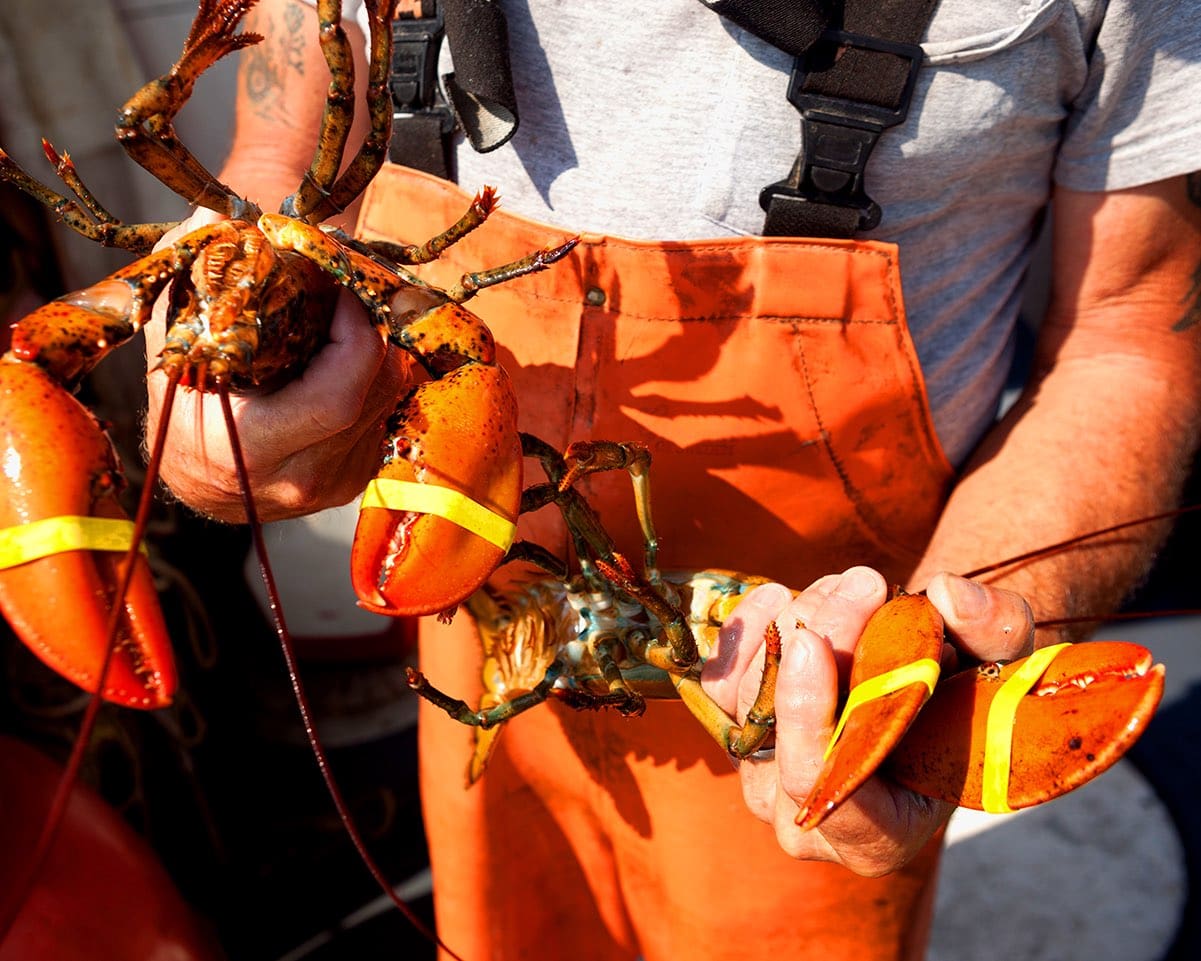North American lobster market reeling
The live lobster market is experiencing a steady influx of Canadian landings, leading to downward pressure on shore prices. Market observers note a significant portion of these landings consist of smaller lobsters, such as chicks and quarters, which is having a bit of an outsized influence on that segment of the market. Many holders are focused on keeping their inventory flowing, frequently engaging in negotiations to diminish abundant positions for certain sizes.
As a result of the influx of live lobster, tail market values have eroded quick-and-sharp as new season production is availed to the marketplace. Meanwhile, meat prices have largely maintained as sellers attempt to satisfy seasonal demand from a limited inventory position; leg meat, which has a different use, is a bit of an outlier and is being discounted.
Larger-sized Snow Crab supplies remain tight
Demand for snow crab has varied from moderate to active. While foodservice is actively participating, retail seems to be purchasing, albeit potentially not as much as last year. Despite this, the overall snow crab market appears to be balanced, attributed to factors such as the catch pace in Newfoundland, lower quotas in the Gulf, and increased Japanese involvement. However, there isn’t a pressing need to purchase snow crab as seen in previous years, with reported moderate, hand-to-mouth buying. There’s currently an adequate volume of crab available, with more to be caught, and the product appears to be moving through the system. Prices for 5-8 size crab are 34% higher compared to last year. The market is also closely monitoring the price gap between 5-8s and larger crab sizes (8s-and-10s), as the supply of larger crab has been limited throughout the season. Sellers are often bundling 5-8s to secure supplies of larger crab, reflecting the noticeable price difference between these sizes.
Taking a closer look at retail, snow crab buying opportunities have dropped by 8.4% this year, with average retail prices down by 22.4% compared to last year. As we move forward, the market will keep a close eye on retail behavior, especially during the summer holidays, which have traditionally seen increased snow crab sales. With the seafood market constantly evolving, it will be intriguing to see how snow crab adjusts.
Copper River Salmon fishing commences
With the opening of the Copper River in Alaska, the summer wild salmon season is officially underway, bringing both opportunities and challenges. This year, projections for sockeye salmon in the district are optimistic, with a 20 percent increase over last year, amounting to approximately 2 million fish. Early catches have been promising, with initial landings nearly tripling the forecast, followed by another strong opening. This abundance, coupled with a more lackluster demand than usual for Copper River salmon, has led to the lowest initial sockeye pricing in three years. Prices typically decrease as the season progresses and supply grows, and lower offers have already begun to emerge.
In contrast, Copper River king salmon initial prices are more consistent with last year’s opening price and slightly below the three-year average, primarily due to more limited landings, which is typical. These prices also tend to drop quickly as supply increases and initial demand subsides. Unlike sockeye, which is the first fishery to open for the season, Copper River kings face competition from other regions that have already seen spring openings for a period of time.
Overall, the opening of the Copper River salmon season highlights the complexities of the wild salmon market. While the surge in sockeye landings has led to lower initial prices, king salmon prices reflect more stability in line with recent trends. As the season progresses, the balance of supply and demand will continue to influence pricing and market dynamics, providing a nuanced outlook for industry stakeholders.
Memorial Day weekend, what’s the Beef?
With the Memorial Day weekend closing in, the boxed beef market has seen significant uplift the last couple of weeks on a combination of factors. One being the lack of profitability at the packing level which has prompted meat packers to reduce slaughter numbers in hopes of balancing supplies more adequately to demand. The second factor is coming out of the Mother’s Day holiday market participants got their first taste of spring grilling demand, ultimately prompting buyers previously sidelined to step back into the market. This has become most noticeable within both the loin and coarse grind category. Boneless strips for example have yet to showcase any weakness in their upward trajectory, trading about 17% higher year-over-year. Short loins have showcased similar trends, albeit a bit delayed when compared to year ago trends, trading about 7.5% above year ago levels, but still a ways off last year’s peak price of 9.87/lb. Coarse grinds have come back into the spotlight for retailers, foodservice and everyone else in between after getting pushed to the back burner much of first two quarters. 81% Coarse grinds, one of the most dominant burger blends for consumers, has grinded higher in recent weeks as production continued to be managed through much of the first half of the year. As buyers continue to be on the lookout for cheaper beef offerings for consumers, 81% coarse grinds will be interested to watch considering they have already surpassed last years peak price of $2.90/lb. by about 5-cents.
Strong Peso exchange rate elevates Bone-in Ham price
The U.S. bone-in ham market is significantly influenced by currency exchange rates, especially the Mexican Peso, as Mexico is a major player in this market. As of the most recent Bar Chart data on Comtell, the Mexican Peso to U.S. Dollar exchange rate was $16.63/MXN, a 3% decrease since the beginning of May. Though this is a stronger rate, it’s still above April 10th’s $16.33/MXN rate, which marked the lowest value in the past eight years. Such exchange rate variations directly impact the pricing and demand for bone-in hams in the U.S.
Bone-in ham prices are about 6.5% higher compared to this time last year. This increase is largely driven by the stronger Mexican Peso, affecting the cost of protein commodity imports and exports between the two countries. Mexican importers now have more buying power than in previous years. The active demand from Mexico, combined with the Peso’s strength, has created upward pressure on U.S. bone-in ham prices.
In April, daily bone-in ham prices peaked at $1.00/lb on the spot market when the Peso was at its strongest so far this year. This price hike affects the market, as bone-in hams are typically converted into boneless material for deli meats during the summer and are also stocked in freezer storage for Christmas and Easter holidays. The strong Peso and higher prices highlight the need for market participants to monitor international trade and currency variations closely, as these factors significantly influence commodity prices and demand, shaping the pork market landscape.



